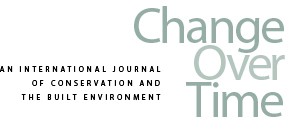
Archaeoacoustics Fieldwork for Aural Heritage Conservation: Collaborative Distributed Sound-Sensing at Chavín de Huántar, Perú | Miriam A. Kolar
Annie Goh, Elías Gálvez-Arango, Brian Morris, Alexa Romano, Samantha Turley, Sophia Colello, William Penniman, Jack Boffa, Celine Wang, Gregory Depaul, & Kevin Keene
In this article, we discuss a case study in group-collaborative archaeoacoustical fieldwork at the Andean Formative ceremonial complex of Chavín de Huántar, Perú, a UNESCO World Heritage Centre1 whose architecture involved extensive landscape engineering during the second and first millennia BCE (figs. 1–2).2 Our fieldwork took place in July 2018 as part of integrative archaeoacoustics at Chavín, a project that employs acoustics and auditory science to address sonic concerns within the structure of the larger site investigation and conservation program.3 The ongoing archaeoacoustics project is known for site-responsive fieldwork at Chavín since 2008.4 The case study we detail in this article prototypes a methodology for a group approach to archaeological acoustical surveying with attention to contextual factors and human perception. Given the absence of standardized methods or tools for archaeoacoustical research, we have adapted metrics and practices from the acoustical and auditory sciences to study sonic dynamics from a cultural heritage standpoint. We present this work as an “aural heritage” engagement and discuss our definition of that term via research examples and contributions to site conservation and knowledge sharing.
Although acoustical science informs conservation planning for many historical theaters, religious buildings, and musical venues, the sociocultural importance of sound is more frequently overlooked in cultural heritage research and preservation.5 In archaeology, the study of human life from material remains, acoustical fieldwork and computational reconstructions can produce demonstrations of sonic communication dynamics derived from site architecture and materials.6 Following archaeological practice, material relationships establish what we refer to here as “contextual realism.” Although physically representative, acoustical science is only one part of our “human-centered” approach to sonic explorations of material culture. The human communicative and perceptual implications of material acoustics must be evaluated in order to characterize the “sonic communication substrate” of cultural heritage sites.7
Integrative archaeoacoustics at Chavín prioritizes understanding spatial acoustics in terms of human perception and material culture…
Visit Project Muse for more articles in this issue.



